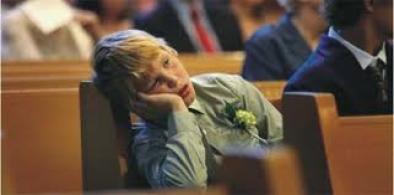Rethinking recruitment: Time to understand inclusion and diversity at work
The world is changing at a fast pace. The term - the world is a global village - has become a common phenomenon

The world is changing at a fast pace. The term - the world is a global village - has become a common phenomenon. Every day hundreds and thousands of people are migrating from one part of the world to another for better prospects, particularly for education and work. Even in low-income countries like Nepal, the terms ‘diverse’ and ‘inclusion’ in jobs are becoming the buzzword. However, this concept is yet to be understood properly.
In the global job market, the human resource department tries to hire a team that is diverse as well as inclusive. Employers are now equally cautious in hiring employees and are keen to make the selections based on these concepts. Recruiting someone based on the set of skills, he or she possesses is quite easy than finding someone with the right attitude so that he or she perfectly matches the team spirit. Changing someone’s attitude is hard then to teach them new skills and engage them in work. This is the reason why in all job interviews, the interviewee is often asked to describe what kind of person he is.
Groups, team and workplace diversity
Most of the time people are using these two terms interchangeably. For them, both team or group means the same. They do not care what the difference is. But there is a big and clear difference. All teams are groups but all groups are not teams. For a group to be called a team, it should have some special characteristics. The authors of the model, Jon Katzenbach and Douglas Smith announced their model in 1993 after having studied teams in different companies and industries. They defined a team as a small group of people with complementary skills, committed to common purposes, performance, goals, and approach for which they are mutually accountable. They combined this model in their book The Wisdom of Teams. Without these key elements, groups perform as individuals; with it, they become a powerful unit of collective performance.
There are several factors that have contributed to increasing diversity in today's workplace. Day-by-day the number of working women is going up. With the change in the notion that women need to play traditional gender roles, there is no sector in which women are not playing an important role. A woman having a degree and a job enjoys special status in all societies of the world. This motivation has largely contributed to women's interest to come out of the house and work side-by-side of men. With the advancement in information and communication technology, there is no need for a team to be in one place and work together. A person may live in one country and work in another. This also has led to a global team with cultural diversity.
Migration is another factor that is significantly making the global job market diverse and unique. The UN Migration Agency (IOM) report shows that in 2019, the number of migrants globally reached an estimated 272 million, 51 million more than in 2010. This means the global workplace is becoming more and more diverse in terms of language, cultural and educational backgrounds.
With longer life expectancy in developed countries, several generations now work together. For financial security, better health and to maintain their social connections, many people now opt to work as long as they can rather than opt for retirement. The 2015 report of the Development for Work and Pensions (DWP), UK, showed that in Britain, the employment rate for people of 65 and above has doubled in the last 30 years, from 4.9 to 10.2 percent.
Diversity and productivity
It is believed that better results can come out if one hires bright minds with outstanding qualifications and a proven track record of meeting targets. They are generally given the top priority. A number of surveys and studies have repeatedly shown that new and worthy invention takes place only in those organizations where the team is diverse and inclusive and welcomes all kind of ideas, celebrate the difference and challenges stereotypical thinking.
David McKay has found that companies grow when they are open to new ideas and new people. This is the reason why the world's most innovative businesses, cities, and economies are the most diverse. Another research by McKinsey Company, which conducted research in 366 companies, found that those who were in the top quartile based on ethnic and racial diversity in their management teams were 35 percent more likely to have better financial returns than the average for their industry. For gender diversity in the top quartile, there is a chance of 15 percent more likely to have better than average returns. A US company, Cloverpop, found inclusive decision making gives surprising results. The findings presented in its report suggested inclusive teams make better business decisions up to 87 percent of the time. And, the decisions taken and executed by a diverse team can produce up to 60 percent better results.
Sundar Pichai, the CEO of Google, has said, "A diverse mix of voices leads to better discussions, decisions, and outcomes for everyone." In nutshell, it is high time that recruiters all across the world, who bat for homogenous teams that are usually based on nepotism and favoritism, should learn something from worldwide research. They should keep this in mind when hiring the next recruit for their company.
(The writer is development professional and General Secretary of Institute of Social Science Research (ISSR), Nepal. The views expressed are personal. He can be contacted at sharmatrilok802@gmail.com)













Post a Comment